They stalk with silence. Strike with precision. And wear a crown of primal royalty. Across jungles, deserts, mountains, and savannas, wild cats reign as some of the world’s most respected predators. These are not your average felines. They’re warriors wrapped in fur—each with a unique power, and a presence that humbles every creature around them. From the ghost-like snow leopard leaping through Himalayan cliffs to the jaguar, crushing skulls in the Amazon with a single bite— these cats don’t just survive. They dominate. Get ready to meet 17 wild cats that don’t ask for respect—they demand it. Some you’ve known since childhood legends. Others you’ve never heard of—but won’t forget.
Tiger

With its regal presence and awe-inspiring power, the tiger stands as Asia’s ultimate predator. Renowned for its vivid orange and black stripes, it silently stalks through dense forests, embodying strength and stealth. This apex predator commands respect with its unparalleled hunting prowess.
Each subspecies of tiger, from the Siberian to the Bengal, thrives in diverse habitats, showcasing adaptability and resilience. Sadly, tigers face threats from poaching and habitat loss, making their conservation a global priority.
In the heart of the jungle, the tiger’s mesmerizing roar echoes through the night, a reminder of its formidable presence and vital ecological role.
Lion
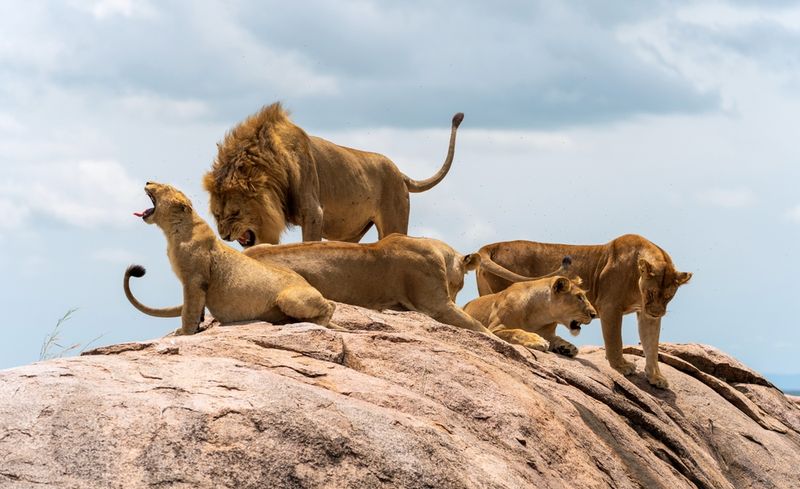
In the vast expanses of Africa, the lion’s roar reverberates across the savanna, a symbol of dominance and social prowess. Known as the king of beasts, the lion’s majestic mane and commanding presence capture the imagination.
Lions are unique among big cats for their social structure, living in prides that work together in hunting and raising cubs. This cooperative nature strengthens their bonds and ensures survival in the wild.
Their territory spans from the African grasslands to the Gir Forest of India, where they continue to thrive as symbols of power and unity, commanding respect wherever they roam.
Jaguar
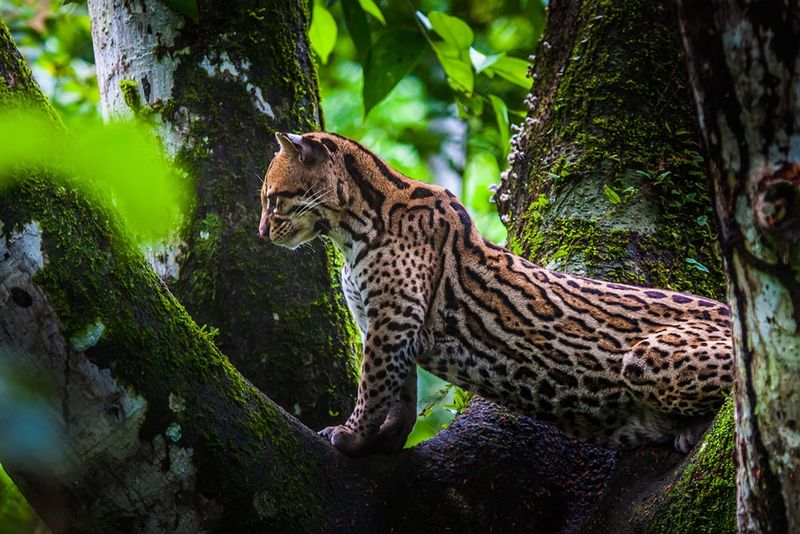
The jaguar, with its formidable build and striking rosettes, is the embodiment of strength and stealth in the Americas. This elusive feline prowls the depths of the rainforest, using its powerful bite to subdue prey.
Renowned for its affinity with water, the jaguar often swims in search of a meal, showcasing its versatility and adaptability. It commands respect with its role as a top predator in the ecosystem.
Despite its prowess, the jaguar faces threats from habitat destruction and conflicts with humans, highlighting the need for conservation efforts to protect this iconic species and its jungle home.
Leopard

Silently gliding through the shadows, the leopard’s ability to blend into its surroundings is unrivaled. Known for its adaptability, this graceful hunter inhabits diverse landscapes across Africa and Asia.
The leopard’s spotted coat is not only a marvel of nature’s artistry but a cloak of invisibility, allowing it to hunt with unmatched stealth. Unlike other big cats, leopards often drag their kills into trees, showcasing their incredible strength.
Despite being widespread, leopards face significant threats from habitat loss and human-wildlife conflict, underscoring the importance of preserving their habitats and ensuring their continued survival.
Snow Leopard
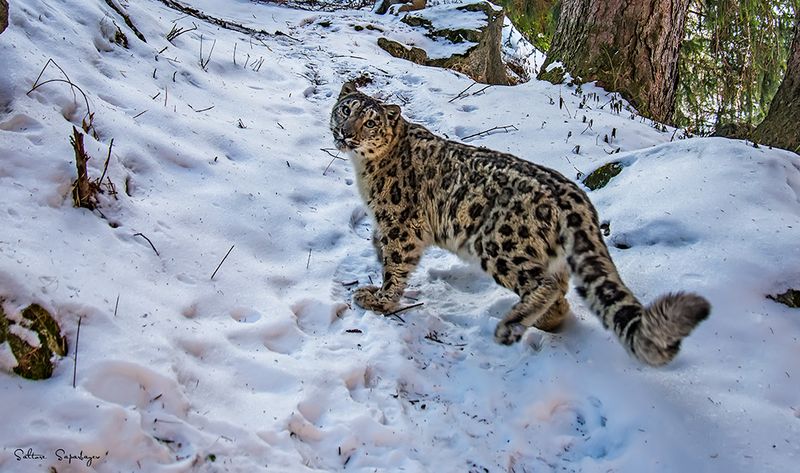
High in the mountains, where snow blankets the landscape, the snow leopard moves with unparalleled grace and stealth. Known as the “ghost of the mountains,” this elusive cat is perfectly adapted to survive in harsh, cold environments.
Its thick, spotted coat provides warmth, while powerful limbs enable it to traverse rocky terrains with ease. Despite its elusive nature, the snow leopard plays a vital role in maintaining the ecological balance of its mountainous habitat.
Threats from poaching and habitat fragmentation pose significant challenges, making conservation efforts crucial to ensuring the survival of this enigmatic species.
Clouded Leopard

In the dense rainforests of Southeast Asia, the clouded leopard is a master of the treetops. With its unique coat pattern resembling clouds, it moves with agility and grace, expertly navigating the forest canopy.
This elusive cat has long canine teeth and a flexible body, adaptations that make it a formidable hunter of arboreal prey. Its mysterious nature and elusive behavior have intrigued wildlife enthusiasts and researchers alike.
Despite its captivating allure, the clouded leopard faces severe threats from habitat destruction and poaching, emphasizing the urgent need for conservation efforts to protect its rainforest home.
Cheetah
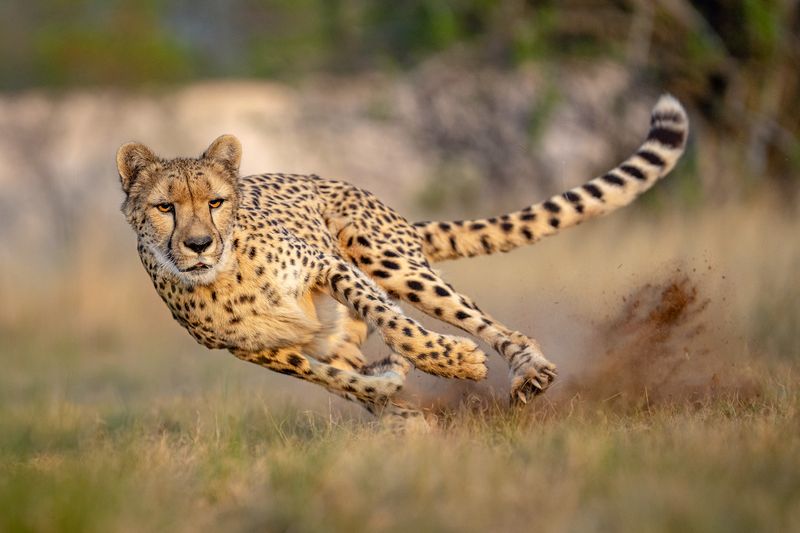
With a burst of unmatched speed, the cheetah races across the savanna, claiming the title of the world’s fastest land animal. Its sleek, aerodynamic body and long legs are built for lightning-fast chases, leaving prey little chance of escape.
The cheetah’s distinctive black tear marks help reduce glare from the sun, enhancing its focus during high-speed pursuits. Despite their speed, cheetahs face challenges from habitat loss and competition with larger predators.
Efforts to preserve open savannas and reduce human-wildlife conflict are crucial to ensuring the survival of this iconic and graceful speedster, revered for its agility and elegance.
Cougar / Puma
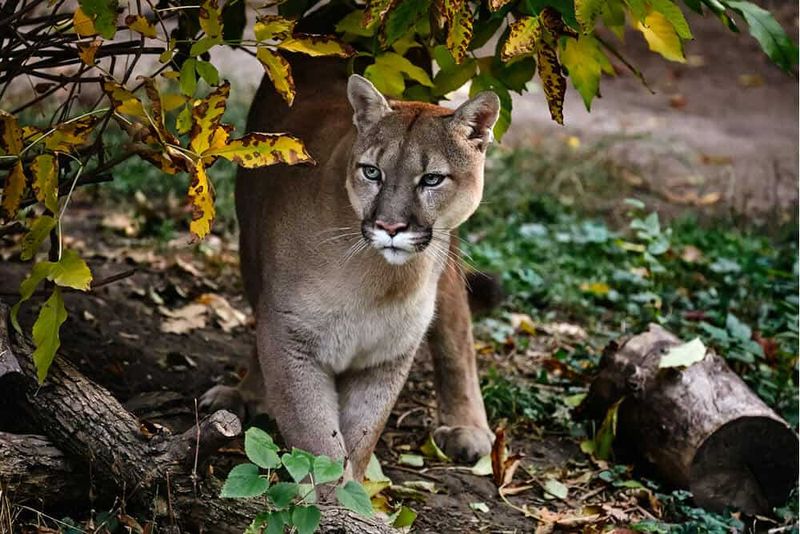
The cougar, also known as the puma, stands as a symbol of adaptability and stealth across the Americas. Its tawny coat and powerful build allow it to thrive in a wide range of environments, from forests to mountains.
This solitary hunter is known for its remarkable ability to stalk and ambush prey, showcasing its cunning and agility. Although elusive, the cougar plays a vital role in controlling prey populations and maintaining ecological balance.
Human encroachment and habitat fragmentation pose significant threats, making conservation efforts essential to safeguarding this iconic and adaptable feline.
Eurasian Lynx
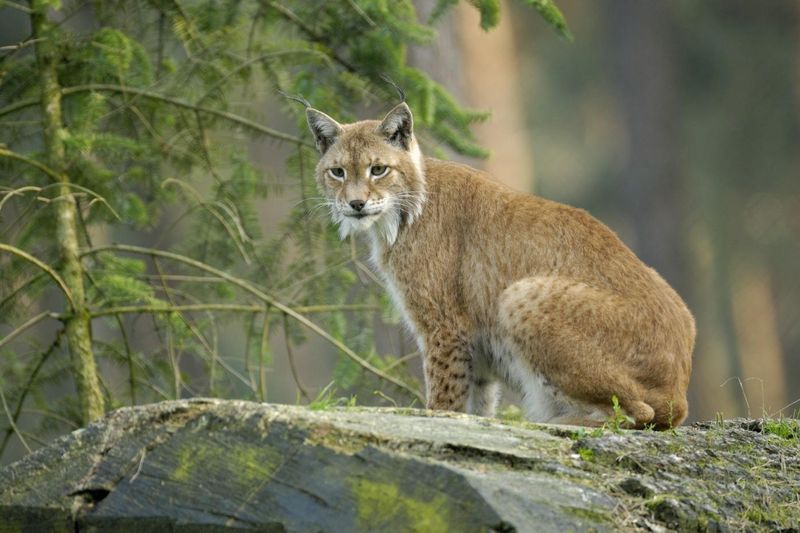
In the dense forests of Europe, the Eurasian lynx prowls with quiet elegance. Recognizable by its tufted ears and spotted coat, this elusive feline is a master of stealth and patience when hunting.
Its powerful build and keen senses make it a formidable predator, preying on deer and smaller mammals. The lynx’s presence is crucial for maintaining the health of forest ecosystems by controlling prey populations.
Despite being widespread, the Eurasian lynx faces threats from habitat loss and poaching, emphasizing the need for effective conservation strategies to ensure its survival in the wild.
Canada Lynx

In the snowy wilderness of North America, the Canada lynx thrives with its thick fur and large, snowshoe-like paws. This elusive feline is perfectly adapted to traverse icy terrains in pursuit of its primary prey: the snowshoe hare.
Its keen senses and stealthy nature make it a skilled hunter, capable of surviving in harsh winter conditions. The Canada lynx is a crucial part of the boreal forest ecosystem, helping to maintain balance by controlling hare populations.
However, habitat loss and climate change pose significant threats, necessitating dedicated conservation efforts to protect this cold-weather specialist.
Iberian Lynx

Once on the brink of extinction, the Iberian lynx is a conservation success story, slowly recovering in the scrublands of Spain. Distinguished by its striking tufted ears and spotted coat, this beautiful cat is a symbol of hope for endangered species.
The Iberian lynx primarily preys on rabbits, relying on their abundance for survival. Conservation efforts have focused on habitat restoration and protecting rabbit populations to support the lynx’s recovery.
Despite its rebound, the Iberian lynx remains critically endangered, highlighting the ongoing need for concerted efforts to ensure its continued survival and the preservation of its natural habitat.
Caracal

With its striking tufted ears, the caracal is a master of agility and precision hunting in Africa’s arid landscapes. Its name, derived from the Turkish word “karakulak,” meaning “black ear,” is a nod to its distinctive appearance.
Renowned for its incredible leaping ability, the caracal can snatch birds from mid-air, demonstrating its formidable hunting prowess. Its sleek, muscular body and keen senses make it a top predator.
While adaptable to various habitats, the caracal faces threats from habitat loss and human conflict, underscoring the importance of conservation efforts to protect this elegant and agile feline.
Serval
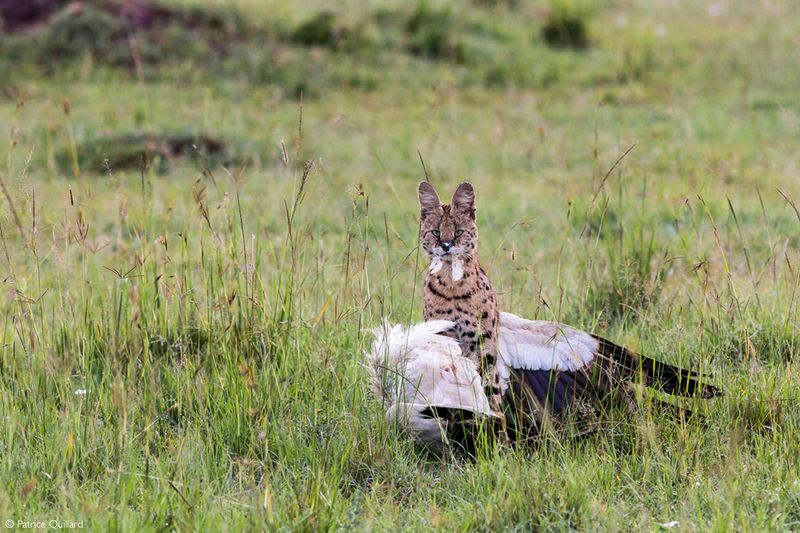
In the tall grasses of the African savanna, the serval’s long legs and large ears make it a master hunter. Its spotted coat provides excellent camouflage, allowing it to remain unseen as it stalks rodents and birds.
Known for its remarkable hearing and leaping ability, the serval can detect and pounce on prey with incredible precision. This medium-sized cat is well-adapted to its environment, thriving in both wetland and dry savanna habitats.
Despite its adaptability, the serval faces threats from habitat destruction and the illegal pet trade, highlighting the need for conservation measures to ensure its survival in the wild.
African Golden Cat

In the dense rainforests of Central Africa, the African golden cat is a creature of mystery and power. With its robust build and golden-brown coat, this elusive feline is an expert in stealth and surprise.
Little is known about the African golden cat due to its secretive nature, but it is known to prey on a variety of animals, from rodents to small ungulates. Its powerful hunting skills and solitary lifestyle make it a formidable predator.
The African golden cat faces threats from habitat destruction and hunting, emphasizing the need for conservation efforts to protect this enigmatic and elusive species.
Fishing Cat
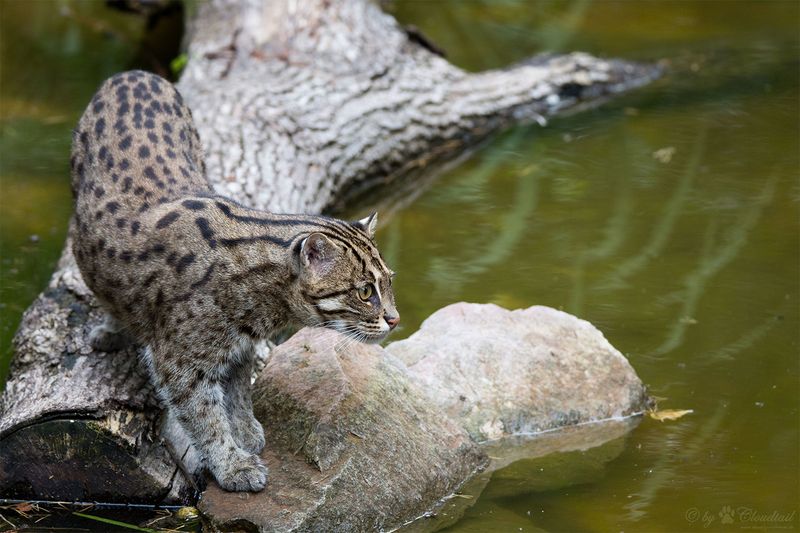
The fishing cat, with its partially webbed feet and water-repellent fur, is a unique felid adapted to life in the wetlands of South Asia. Known for its fishing prowess, it patiently waits by the water’s edge to snatch fish with precision.
This medium-sized cat is an excellent swimmer, often diving into water to pursue its aquatic prey. Its nocturnal habits and elusive nature make it a rarely seen but fascinating creature.
As wetlands face destruction, the fishing cat’s habitat is increasingly threatened, underscoring the importance of conservation efforts to protect these vital ecosystems and the species that depend on them.
Pallas’s Cat
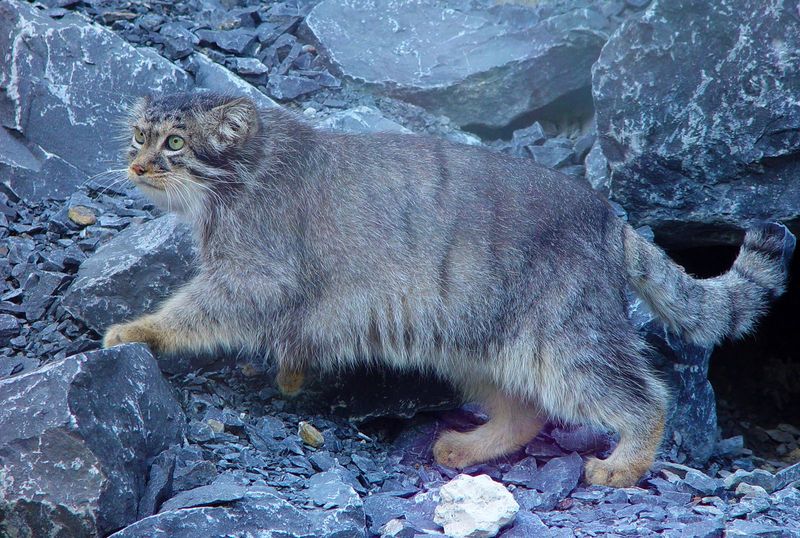
With a face as round as the moon and fur as dense as the tundra, Pallas’s cat is a master of survival in the cold, arid steppes of Central Asia. This small, fluffy feline is known for its solitary and elusive nature.
Its thick coat provides insulation against the harsh climate, while its short legs and stocky build aid in navigating rocky terrains. Pallas’s cat’s peculiar appearance and behavior have captivated wildlife enthusiasts and researchers.
Despite its resilience, this species faces threats from habitat loss and hunting, emphasizing the need for conservation efforts to ensure its survival in the wilds of Asia.
Sand Cat

In the scorching deserts of North Africa, the sand cat thrives as a specialist in survival under extreme conditions. Its sandy-colored fur provides perfect camouflage against the arid landscape, making it a ghostly figure in the shifting sands.
This small, elusive feline is well-adapted to desert life, able to survive with minimal water and hunt at night to avoid the searing heat. Its unique adaptations include fur-lined paws that protect against hot sand.
Despite its mastery of the desert, the sand cat faces threats from habitat degradation and human interference, highlighting the importance of conservation efforts to protect this remarkable survivor.

